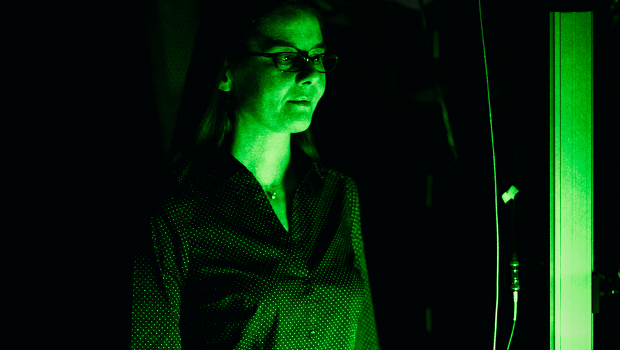At the heart of quantum computing is the ability for qubits – the atomic-scale building blocks of quantum computers – to inhabit more than one physical state at once. Known as superposition, it’s what gives quantum computers their exciting potential.
Superposition can be a real bear to maintain, but MIT researchers announced a new approach developed using synthetic diamonds. Eventually, it could put reliable, working quantum computers within closer reach.
Part of the challenge inherent in quantum computing is maintaining stability. In many other fields that’s accomplished via feedback control: With a desired state in mind, researchers measure the current state and make adjustments as necessary to keep the system in line.
The problem in the quantum world is that measurement – a necessary part of that process – destroys superposition. So, in this area, researchers traditionally have to make do without the feedback they’d otherwise rely on.
The new research describes a feedback-control system for maintaining quantum superposition that requires no measurement. Instead, it uses what’s known as a nitrogen-vacancy centre in a diamond.
“Instead of having a classical controller to implement the feedback, we now use a quantum controller,” said Paola Cappellaro (pictured), the Esther and Harold Edgerton associate professor of nuclear science and engineering at MIT. “Because the controller is quantum, I don’t need to do a measurement to know what’s going on.”
A pure diamond consists of carbon atoms arranged in a regular latticework structure. If a carbon nucleus is missing from the lattice where one would normally exist, that’s considered a vacancy. If a nitrogen atom takes the place of a carbon atom in the lattice in a position that’s adjacent to a vacancy, that’s known as a nitrogen-vacancy (NV) center.
When subjected to a strong magnetic field – in this case, a permanent magnet positioned above the diamond – an NV center’s electronic spin can be up, down or a quantum superposition of the two. Therein lies the value for quantum computing.
First, a dose of microwaves puts the NV center’s electronic spin into superposition. Then, a burst of radio-frequency radiation puts the nitrogen nucleus into a specified spin state. A second, lower-power dose of microwaves “entangles” the spins of the nitrogen nucleus and the NV centre, so that they become dependent on each other.
At that point, the NV qubit could be put to work along with other qubits to perform a computation, but the researchers also administered further microwave exposures to test for errors.
Bottom line? The system allowed an NV-centre quantum bit to stay in superposition about 1,000 times as long as it would otherwise. That, in turn, means working quantum computers could be closer than we’ve thought so far.
IDG News Service







Subscribers 0
Fans 0
Followers 0
Followers